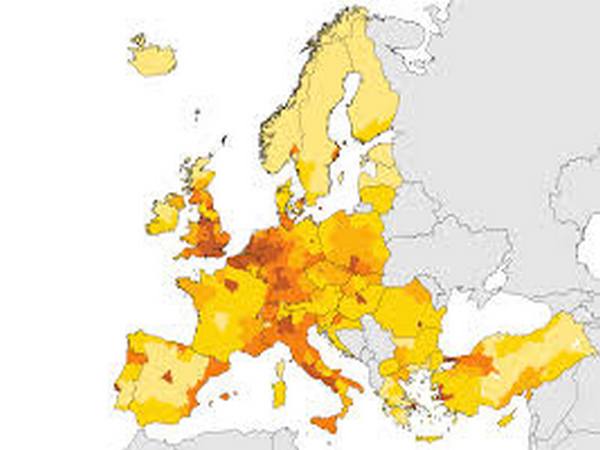WashingtonD.C.[USA]: Covering fertility, mortality, migration, and population structure including population aging of all countries of Europe and broader European regions, Japan, and the USA, the European Demographic Datasheet 2016 provides a comprehensive look at key demographic indicators and main population trends, including population projections for 2050
The data sheet features maps, population pyramids, tables, graphs and thematic boxes highlighting selected topics, including adjusted indicators of total fertility, pension age, and EU-wide population trends including EU population changes with and without a British exit from the EU (Brexit).
It pays special attention to the importance of migration for current and future population changes across the continent, and to newly developed alternative indicators of population aging
Sergei Scherbov, director of demographic research said, “In these data, we apply our new measures of aging that take into account changing life expectancy. This changes the picture of aging in Europe drastically.”
Using the new measures, Scherbov says, eastern European countries show the fastest rate of population aging in Europe, while standard indicators show a deceptively slow rate of population aging for that region.
The data sheet explores some results from the Reassessing Aging from a Population Perspective (Re-Aging) project.
One aspect of this effort is presented on the 2016 data sheet: the concept of intergenerationally equitable normal pension age (IENPA).
The IENPA is the retirement age that ensures that the balance of pension contributions and receipts is the same for each generation, and that pension systems are flexible enough to adapt to changes.
The new data also show how migration contributes to population growth and decline in different countries, featuring the population pyramids for native and immigrant populations, and showing population trends with and without migration up to 2050.
For example, for the EU as a whole, the projections show a population increase of 6.6 percent if migration is considered, while with zero migration, the EU population would decline 5.4 percent by 2050.
For some European countries, the projections show potential increases of over 30 percent with the influence of migration.
Senior researcher Tomas Sobotka said, “Migration is reshaping population trends in many European countries, with population growth increasingly driven by migration rather than by fertility rates. Some countries with low fertility, such as Austria, Switzerland, or Spain prior to the 2008 recession, have experienced robust population growth driven by immigration during the recent decades. In contrast, many parts of eastern Europe, including Romania or Lithuania, have been rapidly losing population due to intensive emigration to more prosperous regions of Europe.”
The data sheet has been released every two years since 2006, and is a key resource for policymakers and demographers interested in EU population dynamics.
The research was presented at the European Population Conference. (ANI)

